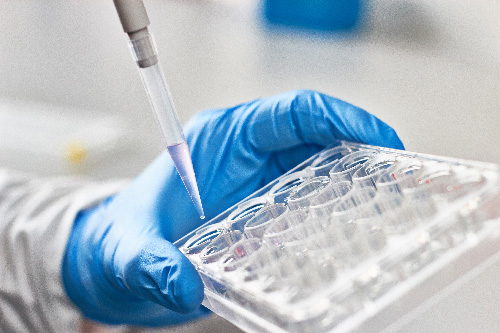Animals have unique and important roles in biomedical and behavioral research. Many medical advances that enhance the lives of humans are developed from carefully planned and highly regulated research studies with animals.
Good animal care and good science go hand in hand. NIH takes the involvement, role, and respectful use of animals in research seriously. The integrity of the research results depend on ensuring that the animals are well cared for throughout the research process. Well cared for animals that have their physical and behavioral needs met introduce fewer unwanted variables that can negatively affect the study results.

Similarities to laboratory animals can help researchers understand important biological and physiological processes in humans. This understanding may inform how we can better prevent, diagnose, treat, and cure diseases.
Scientists thoughtfully and carefully choose and justify the specific animal models used in research based on their similarity and relevance to humans in anatomy, physiology, and/or genetics, or even everyday living conditions. Animals serve as "models" that allow study of certain aspects of a biological phenomenon being investigated. There are times when certain animal models are used, like fish, frogs, fruit flies, and roundworms. Their anatomy and physiology may be quite different from humans in some respects, but they can still help researchers address fundamental biological processes similar across species. In NIH funded research, these models are carefully selected to study those aspects of biology and health that are most likely to be similar and relevant to those of humans.
Likewise, preclinical trials involving animals, such as in the Comparative Oncology Program, shed light on risk factors common to people. The tools and treatments resulting from this research are then used to improve the lives of humans.
Investigating a Hypothesis
When researchers develop hypotheses (which are scientifically backed ideas) about the possible causes of diseases and potential treatments, these hypotheses must be meticulously evaluated to ensure that findings are correct. When necessary, such as for studies of a possible treatment, new hypotheses are studied in animal models first to gather sufficient evidence of these benefits and risks before considering use in humans or additional animals.
Controlling Potential Variables
Animal studies conducted in the laboratory allow scientists to control potentially confounding factors that might affect the outcome of the experiments. This includes factors like temperature, humidity, light, diet, or medications. Even the genetics of many animal models can be known and well understood, so only the factor being tested is changed and examined. These rigorous controls allow for more precise understanding of biological factors and provide greater certainty about experimental outcomes when developing treatments.
The findings also move the scientific process forward, setting the stage for future research and studies in humans. This is called translational research. But first, preclinical research into new possible treatments and interventions may be performed in animals before clinical trials in humans begin. Some research builds fundamental knowledge to enhance our understanding of physiological systems. This includes research to understand what might contribute to unexpected outcomes within animal research and to develop new models of health and disease.
What Researchers Consider when Planning Studies involving Animals
Scientists must clearly explain why animals are necessary for their research and that the minimal number needed to ensure rigorous and reproducible studies will be used when proposing ideas to NIH for funding and throughout the research activity itself. Every NIH-funded activity involving live vertebrate animals must describe in their NIH grant application:
- How it is scientifically important, hypothesis driven, and relevant to public health
- What specific animals and how many will be involved as well as why they were selected
- Why the specific animal is appropriate for the questions being asked
- A complete description of all procedures that will be performed on the animals
- How any potential discomfort, distress, injury, and pain the animals may experience will be minimized
- Why the study cannot be done using another model or approach
- The research findings and outcomes, and their potential benefits
The 3Rs: Replace, Refine, and Reduce
The “3Rs” refer to the basic principles of responsible animal use. NIH requires researchers consider these principles when designing studies.
- Reduction: Design experiments with proper statistical analyses, appropriate timelines, and appropriate comparison groups so the fewest number of animals are used (related to the second bullet above)
- Replacement: Use non-animal models at every possible opportunity that is appropriate for the science (related to the sixth bullet point above)
- Refinement: Carefully choose experimental procedures that will minimize pain or distress (related to the fourth and fifth bullet points above)